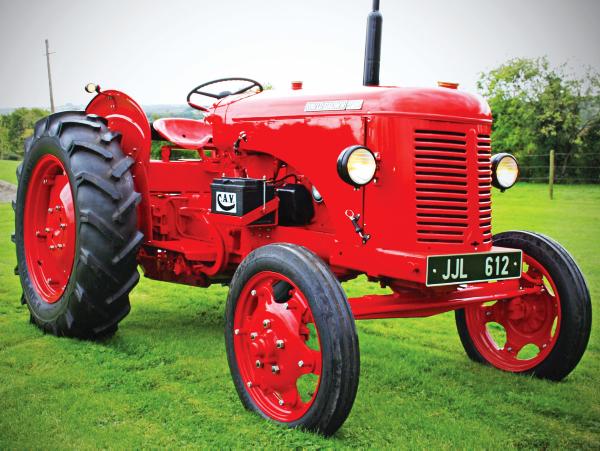These models superseded the Cropmaster which was introduced six years earlier, and continued to bear a resemblance to the VAK1, the first tractor unveiled by the David Brown Company in 1939.By 1953, both tvo and diesel versions of the Cropmaster were available. Indeed, the Cropmaster Diesel was the first British built tractor with a factory fitted diesel engine designed and built in-house. The other British tractors of the era were tvo machines converted to diesel power using engines supplied by companies such as Frank Perkins Limited.
These models superseded the Cropmaster which was introduced six years earlier, and continued to bear a resemblance to the VAK1, the first tractor unveiled by the David Brown Company in 1939.
By 1953, both tvo and diesel versions of the Cropmaster were available. Indeed, the Cropmaster Diesel was the first British built tractor with a factory fitted diesel engine designed and built in-house. The other British tractors of the era were tvo machines converted to diesel power using engines supplied by companies such as Frank Perkins Limited.
However, the Cropmaster Diesel soon faced stiff competition from rivals such as the Ferguson TEF20 and the very reasonably priced Fordson Major E1A.
With its robust chassis design, attractive tinwork and cushioned bench seat, the Cropmaster was a relatively luxurious tractor by comparison, and was much more expensive to build.
David Brown therefore introduced the 25 and 30 Series models which were effectively stripped down versions of the Cropmaster.
The attractive tinwork of the Cropmaster, designed by HJ Mulliner & Co who incidentally also styled coach-work for Bentley and Rolls-Royce cars, was discontinued.
The Cropmaster’s wide mudguards were replaced by simple fan-shaped items, while production of the scuttle that had been a feature of David Brown tractors from the outset ceased.
Early 30 Series David Brown tractors are similar in appearance to their predecessors as they were fitted with Cropmaster style tinwork until supplies were used up.
The cushioned bench seat of the Cropmaster was also replaced by a cheaper metal pan-type alternative, while the pedal arrangement of the tractors was changed to a more conventional layout whereby the driver was required to straddle the transmission housing to operate the clutch and brake pedals. Both pedals were located on the right-hand side of the previous Cropmaster tractor.
The tvo and diesel 25 and 30 Series models were designated 25C/30C and 25D/30D respectively. The 25D and 30D tractors were powered by four-cylinder diesel engines rated at 31hp and 34hp respectively.
Early David Brown engine blocks are prone to frost damage, particularly around the water tap, so be sure to check this before purchasing an example for restoration.
The tractors’ engines were mated to a high/low gearbox providing six forward and two reverse speeds, while they were the first David Brown models fitted with the company’s ‘Traction Control Unit’ (TCU).
Although the 25 and 30 Series tractors are almost identical in appearance, 25 Series models can be quickly distinguished from their more powerful siblings by their smaller air filters and narrower 4” as opposed to 6” front wheels. However, as was the case with the Ferguson TEF20, the 25D’s narrow 4.00 X 19” front wheels were often replaced by wider 6.00 X 19” versions!
The new tractors were fitted with 28” rear wheels as standard, the design of which changed during their production run from the Cropmaster style spoked wheel to a more conventional pan design.
Like their predecessors, the David Brown 25 and 30 Series tractors proved to be robust and reliable machines, and were a popular choice among the farming community of the era, filling the gap in the market between tractors such as the Ferguson TEF20 and larger machines such as the Fordson Major E1A. The models were superseded by the ill-fated David Brown 900 in 1956, which was in turn replaced by the successful Implematic range two years later.
*robertkierans@hotmail.com






SHARING OPTIONS